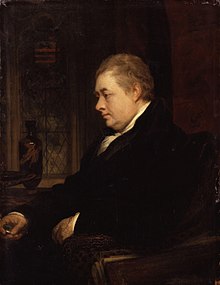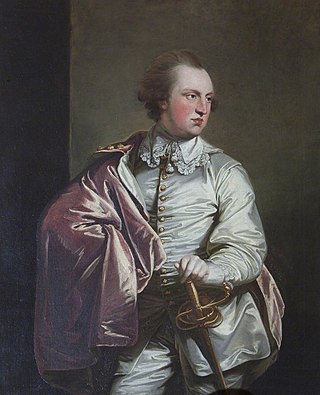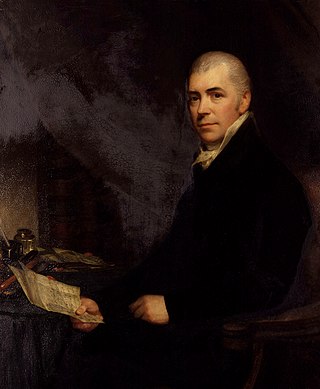
Sir Henry Charles Englefield, 7th Baronet FRS FRSE FSA FLS (1752 – 21 March 1822) was an English antiquary and astronomer.

Sir Henry Charles Englefield, 7th Baronet FRS FRSE FSA FLS (1752 – 21 March 1822) was an English antiquary and astronomer.
He was born at the family mansion, Englefield House, near Reading, Berkshire, the eldest son of Sir Henry Englefield, 6th Baronet (d. 1780) and his second wife, Catherine, daughter of Sir Charles Buck, 3rd Baronet. His father, who was the son of Henry Englefield, of Whiteknights Park at Earley near Reading, had in 1728 succeeded to the title and the Engelfield estates at Wootton Bassett, Wiltshire, so that he inherited both Whiteknights and Wootton Bassett on the death of his father, 25 May 1780. [1]

In 1778 aged 26 Englefield was elected a Fellow of the Royal Society, and in the following year Fellow of the Society of Antiquaries. For many years he was vice-president of the latter, and succeeded George Townshend, Earl of Leicester as president. Owing, however, to his being a Catholic, objection was taken to his re-election; another factor was his opposition to the 1797 election to the Society of the architect James Wyatt. [1] [2] He was replaced by the Earl of Aberdeen. Under his direction the society produced between 1797 and 1813 a series of engravings of English cathedrals, to which he contributed dissertations on Durham, Gloucester, and Exeter. [1]

In 1781 Englefield joined the Dilettanti Society and acted as its secretary for fourteen years. Besides his antiquarian studies, which he published in contributions to Archaeologia , he carried on research in chemistry, mathematics, astronomy, and geology. His "Discovery of a Lake from Madder" won for him the gold medal of the Society of Arts. He took no part in politics, owing to Catholic disabilities, but was close to Charles James Fox. His portrait was painted by Sir Thomas Lawrence, and two bronze medals were struck bearing his likeness. [1]
In 1782 Englefield was elected to the Catholic Committee. In its conflict with the Vicars Apostolic he contributed a pamphlet in answer to Samuel Horsley, an Anglican prelate, later pro-Catholic, before the Catholic Relief Bill of 1791. Englefield took an independent line. In 1792 he was prepared to move a strong resolution at the general meeting of English Catholics. He was dissuaded by mediators between the two parties. [1]
During his last years Englefield's eyesight failed. He never married, and died at his house in Tilney Street, London, the baronetcy becoming extinct. [1] He is buried in Englefield Churchyard. [3]
Englefield's works were: [1]
Joseph Gillow printed a list of his papers contributed to the transactions of the Society of Antiquaries, Royal Society, Royal Institution, Society of Arts, and the Linnaean Society, as well as to Nicholson's Journal and Tilloch's Philosophical Magazine . [1]
Sir Joseph Ayloffe, 6th Baronet FRS, FSA was an English antiquary.

Brownlow Cust, 1st Baron Brownlow, of Belton House near Grantham in Lincolnshire, was a British Tory Member of Parliament.

Englefield House is an Elizabethan country house with surrounding estate at Englefield in the English county of Berkshire. The gardens are open to the public all year round on particular weekdays and the house by appointment only for large groups.

Colonel Henry George Herbert, 2nd Earl of Carnarvon DL, FSA, styled The Honourable Henry Herbert from 1780 to 1793 and Lord Porchester from 1793 to 1811, was a British peer, nobleman, and Whig politician.

John Thomas Stanley, 1st Baron Stanley of Alderley, known as Sir John Stanley, 7th Baronet, from 1807 to 1839, was an English peer and politician.
John Gage Rokewode was a historian and antiquarian.
Mark Aloysius Tierney was an English Catholic historian.

John Chetwode Eustace was an Anglo-Irish Catholic priest and antiquary.

Sir Henry Halford, 1st Baronet, GCH, born Henry Vaughan, was president of the Royal College of Physicians for 24 years. As the royal and society physician, he was physician extraordinary to King George III from 1793 to 1820, then as physician in ordinary to his three successors – George IV, William IV and the young Victoria. He also served other members of the royal family until his death.

Charles Lyttelton (1714–1768) was an English churchman and antiquary from the Lyttelton family, who served as Bishop of Carlisle from 1762 to 1768 and President of the Society of Antiquaries of London from 1765 to 1768.
The Englefield Baronetcy, of Wootton Basset in the County of Wiltshire, was a title in the Baronetage of England. It was created on 25 November 1611 for Francis Englefield. He was a great-grandson of Sir Thomas Englefield, Speaker of the House of Commons, and the nephew of Sir Francis Englefield. The seventh Baronet was an antiquary and scientist. The title became extinct on his death in 1822.
Sir Richard Joseph Sullivan, 1st Baronet was a British MP and writer.
John Carter (1748–1817) was an English draughtsman and architect, who was an early advocate of the revival of Gothic architecture.

Sir John Swinburne, 6th Baronet was an English politician and patron of the arts.

Henry Howard FRS was an English antiquarian and family historian, best known as the author of Memorials of the Howard Family. He was a member of the Howards of Corby, a branch of the Howard family headed by the Duke of Norfolk.
Henry James Richter (1772–1857), artist and philosopher, was born in Middlesex, possibly at 40 Great Newport Street, Soho, on 8 March 1772 and baptised at St Anne's Church, Soho, on 5 April at that same year.
![]() This article incorporates text from a publication now in the public domain : Herbermann, Charles, ed. (1909). "Sir Henry Charles Englefield". Catholic Encyclopedia . Vol. 5. New York: Robert Appleton Company.
This article incorporates text from a publication now in the public domain : Herbermann, Charles, ed. (1909). "Sir Henry Charles Englefield". Catholic Encyclopedia . Vol. 5. New York: Robert Appleton Company.